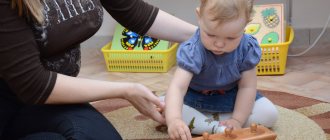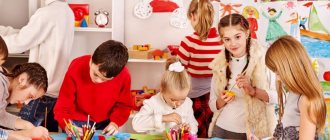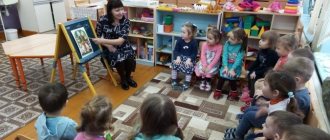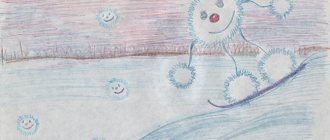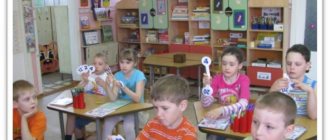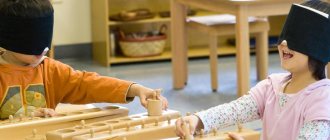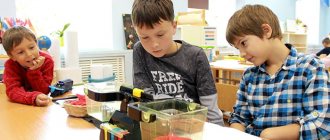The beginning of the twentieth century literally divided the history of mankind into before and after, because life underwent incredible changes and required new moral guidelines, approaches to education and upbringing, and the organization of work and leisure. It was a period of bold experiments and amazing discoveries. Despite all the social upheavals, people of the twentieth century became freer and more progressive, which means that upbringing and education had to change a lot, because kids had to grow up in a completely new world.
The observations and innovations of the Italian doctor Maria Montessori became a real breakthrough in pedagogy, since her approach simultaneously had both a good theoretical basis and brilliant results in practice. In this article we will try to highlight all the main features of Montessori education and discuss for which children classes using the M. Montessori method are best suited.
Basic Montessori Methods
To briefly outline the main ideas of the Maria Montessori method, it is important to first explain on what beliefs the approach is based:
1. The child develops following his natural interests and thanks to the experience independently gained on their basis,
2. Only a well-organized environment allows a child to fully realize his development potential,
3. An adult can be a guide and assistant, but cannot become the only full-fledged source of knowledge and skills for the development of a child,
It is these beliefs that determine the style of interaction between children and adults who have chosen the Montessori method for their children.
The approach is distinguished by a specially organized environment (didactic material freely accessible to the child), appropriate to the age of the children; the child’s leading position, his independence and free choice of activities; respectful and attentive attitude of adults to the individual needs of the baby.
Let's briefly formulate the basic principles of the Maria Montessori method:
1. Lack of a classroom system and free movement of the child in the classroom space,
2. The absence of a unified program and compulsory curriculum for all pupils, an individual approach to each child,
3. Classes using the M. Montessori method are held in a group of different ages,
4. Any Montessori session requires a prepared environment, ordered and varied materials for learning,
5. The adult follows the child’s interest, observes the children’s work and is very limited in their independent activities.
Now let's study in more detail the features of the Montessori method and start with what goals a Montessori teacher faces depending on the age of the students.
“The louder you whistle, the higher I will rise.” How the path of a woman of the era began
Photo from the website of the Russian Montessori School named after.
St. George Maria Montessori was born in Italy in 1870. Her father was in charge of finance at a state tobacco factory and adhered to traditional views. Mother came from the oldest Italian family of Stoppani, which was famous for its prominent scientists. It was she who noticed that young Maria was distinguished by her lively mind and determination. The girl loved mathematics so much that she even took textbooks to the theater. In the semi-darkness of the hall, she was on her knees solving equations and problems.
19th century Italy did not provide educational opportunities for women. The lot of ladies is farming, raising children and charity. Maria, on the contrary, has been involved in science since childhood and dreamed of becoming an engineer. At the age of 13, she broke the stereotype of those years and entered a technical school for boys. Good grades helped her enter the ranks of students at the Technical Institute. Leonardo da Vinci. When the moment of graduation approached, the future student realized: her calling was to become a doctor.
Even in her youth, Maria Montessori first thought about suppressing the student’s personality. The rigid framework of conventions did not allow children to reach their potential and ruined their talents.
She still managed to enroll in the natural sciences course at Sapienza, one of the oldest universities in the world. But the boys were offended by the idea that a young girl would study with them. Dissatisfied classmates constantly tried to “put her in her place,” snorting and laughing contemptuously.
She could only go to lectures accompanied by a man, and sit down only when all the male students had taken their seats. It reached the point of absurdity: a woman examining a naked body is a scandal! Maria had to stay after class and explore human anatomy herself.
Goals of lessons using the Montessori method by age
The approach provides education for children from birth to secondary school, while the focus of attention, and therefore the techniques used in a Montessori environment, depend on the age of the child. Below we offer a table that outlines the main goals of Montessori education for children at different age stages.
| Child's age | Goals of Montessori education | Basic techniques and formats |
| From birth to three years |
|
|
| From three to six years |
|
|
| From six to twelve years |
| A comprehensive study of the experience accumulated by humanity and more specialized classes devoted to the study of the universe, wildlife, humanity, language and the world of exact sciences |
| Twelve to fifteen years old |
| Unfortunately, the methodology was not developed by Maria Montessori herself, however, followers of the approach actively use group work, scientific discussions, individual educational plans and practical work for the personal and professional development of adolescents |
Even from this table it is clear that the development of a harmonious personality must certainly begin at a very early age, which is why Montessori teaching methods are used primarily in preschool institutions, because in the future Montessori graduates are much more adaptive and achieve better results in schools of a variety of approaches.
First of all, the essence of the Montessori method for children of all ages is education based on the individual strengths and interests of each child. Montessori education encourages children to explore the world around them and find their own place in this world.
Montessori method - for which children is this approach suitable?
Surprisingly, we often meet parents who are convinced that Montessori teaching methods are only suitable for gifted and “naturally” motivated children. Parents feel that if their son or daughter is not forced to study, they will simply lie on the couch all day.
In fact, it is always worth remembering that children’s curiosity and desire to explore the world are an innate quality of absolutely any child. The described passivity is most often caused by external factors: an unsuitable environment and an incorrectly organized daily routine, incorrect behavior of adults, and poor health of the child.
Despite the fact that all Montessori techniques involve the child’s free choice and almost unlimited movement around the classroom, even the most “uncontrollable” and “difficult” children eventually successfully integrate into the process.
However, if you think that at first it will be difficult for your baby in group classes using the Montessori method or you are worried about some of the child’s health, all branches of our club offer individual lessons so that your baby has additional adult attention for easier adaptation to a new environment.
Montessori kindergarten - what to expect from classes using the well-known method
The Montessori method is in demand both at school and in preschool institutions. However, in Moscow, most often, classes using the Maria Montessori method are designed for children up to 6-7 years old, after which they successfully transfer to both specialized Montessori schools and general education institutions. Taking into account this peculiarity of Moscow education, we have developed both a program exclusively based on the Montessori method, and groups where Montessori teaching methods and its basic principles are organically combined with more traditional formats of classes for children, as well as visits to a speech therapist and other specialists.
The environment of Montessori kindergartens stimulates children's cognitive activity. All Montessori classes are divided into zones: practical life, sensory, language, mathematics, space (the world around us), creativity. Each zone is filled with a variety of educational objects and didactic games, by interacting with which the child independently studies the properties and functions of things and learns new things.
In a Montessori kindergarten there is always a lot of space and educational materials, children always have the opportunity to choose an activity to their liking, and kindergarten teachers who have undergone special training in the Montessori method only help children make independent discoveries.
A pleasant bonus for parents who have chosen a kindergarten using the Montessori method will also be the availability of regular consultations for parents, at which teachers and child psychologists explain in detail the objectives of the method, share the successes of their students, and also give recommendations on education using the Montessori method. Houses.
A little history...
The founder of the famous technique is the first woman in Italy to master the profession of a doctor. Working with children with developmental disabilities, the author developed her own rehabilitation course, which was highly appreciated in the teaching community.
In 1907, the “Children's Home” opened its doors for the first time for healthy preschoolers and schoolchildren. It was in this institution that the very methodology that we are talking about today was applied.
Subsequently, the method became widely known - Montessori gave a large number of lectures, published several unique books and many teaching aids. Preschool educational institutions appeared all over the world in which teachers used this method, and a little later experimental schools appeared. For more than a hundred years, it has remained at the peak of popularity among parents and teachers.
conclusions
Education according to the Maria Montessori method is qualitatively different from traditional approaches: an adult does not teach lessons and does not require them to put their hands on the desk and listen carefully, children have the opportunity and time to learn what is interesting to them, and a specially organized environment ensures that “interesting” “was always “useful.” Thanks to these conditions, the method has received international recognition, graduates of Montessori gardens consistently demonstrate interest in learning, developed self-control skills and successfully master the school curriculum, and parents are proud of their talented, independent and truly happy children.
Why do you need a teacher if he does not interfere in the process?
The main function of the teacher is the correct organization of the environment in accordance with the age and sensitive periods of children’s development. In the most visible and accessible places there should be toys and objects that are most relevant for children of this age.
The second task of the teacher is to help the child if he asks for it. For example, a child may ask to name, tell or do something that he himself cannot yet do. At the same time, the adult tries not to do it for the child, but to help him learn to do it on his own.
The third function is observation. By observing children, an adult can draw conclusions about what the child is more drawn to and try to enrich the environment in this direction. And activities that have never come into the child’s field of vision can be placed in the most visible and accessible place so that they can be tried out. Just like in any children's group, it is necessary to maintain order so that the children do not offend each other, learn to negotiate and interact.
